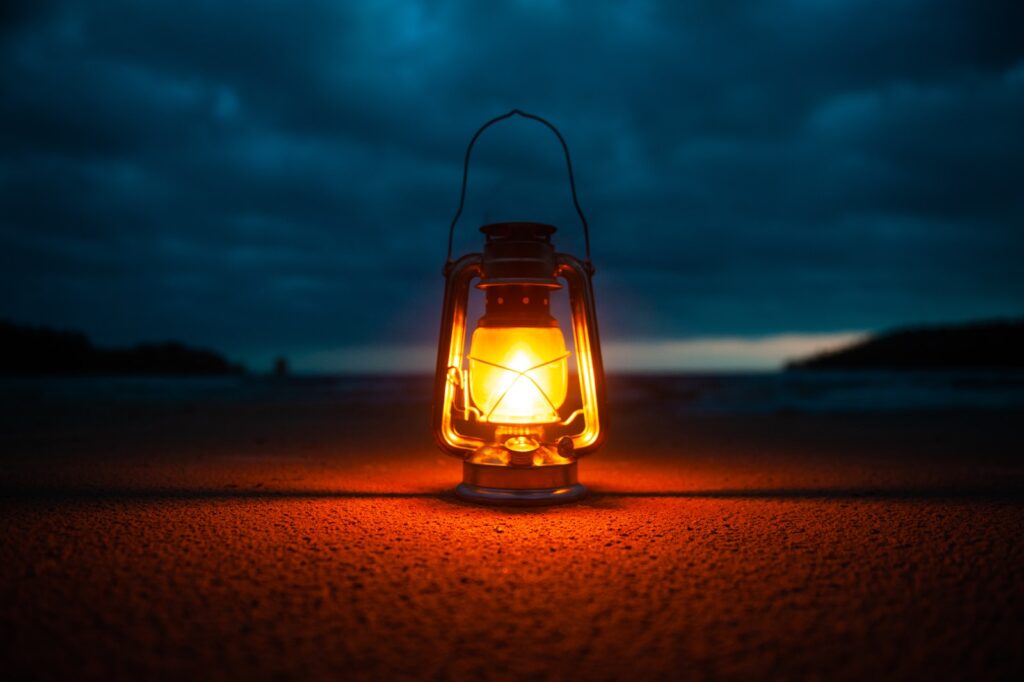Imagine you are deep in the wilderness, surrounded by darkness. You reach for your trusty lantern, eager to banish the shadows and fill the night with light. But have you ever wondered about the science behind lumens – the measurement of brightness in lanterns? In this article, we will explore the fascinating world of lumens and uncover the secrets behind lantern brightness. So, grab your flashlight and get ready to illuminate your knowledge!

Understanding Lantern Brightness Lumens
What are lumens?
Lumens are a unit of measurement that quantify the amount of visible light emitted by a light source. Essentially, lumens measure the brightness of a light source. When it comes to lanterns, the number of lumens can give you an idea of how bright the lantern will be.
How are lumens measured?
Lumens are determined through scientific measurements using specialized equipment called photometers. These devices calculate the total amount of visible light emitted by a light source and provide a numerical value in lumens. The higher the lumen count, the brighter the light source.
Importance of lumens in lanterns
Lumens play a crucial role in lantern brightness as they determine the brightness level of the light emitted. When choosing a lantern, it is important to consider the lumens to ensure that it meets your desired illumination needs. A lantern with higher lumens will provide a brighter light, making it suitable for larger spaces or outdoor activities at night.
Factors Affecting Lantern Brightness
Light source
The type of light source used in a lantern significantly influences its brightness. Different light sources have varying efficiency levels, energy consumption, and color temperatures, all of which impact the brightness produced.
Lens design
The design of the lens in a lantern is another crucial factor affecting its brightness. The lens helps control the direction and focus of the light emitted by the light source. Various lens designs, such as Fresnel lenses and collimator lenses, enhance the dispersion and projection of light, ultimately affecting the overall brightness.
Reflectors and optics
Reflectors and optics in a lantern play a vital role in maximizing the utilization of light emitted by the light source. Mirror reflectors and aluminum reflectors help direct and focus the light, improving the overall brightness and beam distance of the lantern. Total internal reflection is also utilized to ensure that minimal light is lost during transmission.
Power source
The type of power source used in a lantern can impact its brightness level. Different battery types, such as alkaline batteries and rechargeable batteries, have varying voltage and current ratings, which directly affect the brightness output. Additionally, solar-powered lanterns utilize renewable energy, providing a sustainable and potentially brighter option depending on the available sunlight.
LED technology
LEDs (Light Emitting Diodes) have revolutionized lantern technology with their numerous advantages. LEDs are highly efficient, consuming minimal energy while producing bright illumination. They also have a long lifespan compared to traditional light sources like incandescent bulbs or fluorescent bulbs. LED technology allows for greater control over color temperature and offers high CRI (Color Rendering Index), ensuring accurate color representation.
Light Source
Types of light sources used in lanterns
Lanterns utilize various types of light sources, each with its own characteristics and performance. The choice of light source depends on factors such as energy efficiency, brightness, and durability.
Incandescent bulbs
Incandescent bulbs are traditional light sources consisting of a filament that emits light when heated by an electric current. While incandescent bulbs have a warm and familiar glow, they are less energy-efficient compared to newer technologies.
Halogen bulbs
Halogen bulbs are an improved version of incandescent bulbs. They contain a halogen gas that increases the lifespan of the filament and improves energy efficiency. Halogen bulbs are brighter and more durable than incandescent bulbs, making them suitable for lanterns that require higher brightness levels.
Fluorescent bulbs
Fluorescent bulbs utilize gas discharge to produce visible light. They are more energy-efficient than incandescent bulbs and can provide a greater brightness output. However, fluorescent bulbs often require a warm-up time, especially in cold environments, before reaching full brightness.
LEDs
LEDs, as mentioned earlier, are highly efficient and long-lasting light sources. They are solid-state devices that emit light when an electrical current passes through them. LEDs are known for their instantaneous illumination and are a popular choice in lanterns due to their brightness, energy efficiency, and durability.
Comparison of different light sources
When comparing different light sources, it is essential to consider factors such as energy consumption, brightness, lifespan, and color temperature. While incandescent and halogen bulbs have a warm light with lower efficiency, fluorescent bulbs offer higher efficiency but require warm-up time. LEDs outshine the other light sources by providing the highest brightness and energy efficiency, along with a longer lifespan.
Lens Design
Importance of lens design in lanterns
The lens design in lanterns plays a critical role in directing and shaping the light emitted by the light source. It helps control the dispersion, focus, and beam angle, ultimately impacting the overall brightness and coverage area.
Fresnel lenses
Fresnel lenses are widely used in lanterns due to their ability to minimize size and weight while maximizing the effectiveness of light dispersion. Their unique construction, consisting of concentric ridges on one side, allows the lens to bend and spread light over a larger area, resulting in improved brightness and coverage.
Collimator lenses
Collimator lenses are designed to provide a narrow and focused beam of light. These lenses help concentrate the emitted light into a straight and well-defined path, enabling the lantern to reach longer beam distances. Collimator lenses are commonly used in lanterns for activities that require a focused and powerful light source, such as search and rescue operations.
Refraction and reflection
Refraction and reflection are fundamental principles of lens design. Refraction occurs when light passes through a lens material, causing it to bend and change direction. Reflection, on the other hand, involves the bouncing back of light rays from the lens surface. These phenomena are utilized to control and manipulate the path of light in lanterns, ensuring optimal brightness and beam direction.
Dispersion of light
The dispersion of light refers to the spread of light rays after passing through a lens. Different lens designs offer varying degrees of dispersion, affecting the coverage area and brightness distribution. Lanterns with wider dispersion angles provide broader coverage, while those with narrower angles offer more focused and intense illumination.
Reflectors and Optics
Role of reflectors in lanterns
Reflectors play a crucial role in lanterns by directing and reflecting light towards the desired area. They optimize the utilization of light emitted by the light source and enhance the overall brightness and coverage.
Mirror reflectors
Mirror reflectors are designed to reflect light with minimal loss. They have a highly reflective surface that redirects light rays towards the desired direction, thereby maximizing the brightness output. Lanterns equipped with mirror reflectors are known for their efficient light distribution and improved visibility.
Aluminum reflectors
Aluminum reflectors are commonly used in lanterns due to their high reflectivity and durability. These reflectors efficiently redirect the light emitted by the light source, ensuring a focused and bright beam. Aluminum reflectors also help in heat dissipation, preventing excessive heat buildup within the lantern.
Total internal reflection
Total internal reflection occurs when light strikes the boundary between two materials with different refractive indices, causing the light to be completely reflected back into the first material. This phenomenon is utilized in lanterns to prevent light loss during transmission. By using materials with appropriate refractive indices, lanterns can maximize the brightness and beam distance.
Focus control
Some lanterns offer focus control mechanisms that allow users to adjust the light beam according to their needs. By changing the position of the reflector or lens, the focus can be narrowed or widened, altering the brightness and coverage area. This feature is particularly useful when you need to switch between a focused beam for distant objects and a wider beam for close proximity.
Power Source
Battery types for lanterns
Most lanterns rely on batteries as a power source. The choice of battery type can determine the brightness, runtime, and convenience of the lantern.
Alkaline batteries
Alkaline batteries are widely used in lanterns due to their availability and reliability. They provide a steady power supply, ensuring consistent brightness throughout the battery life. Alkaline batteries are also suitable for situations where recharging is not possible or convenient.
Rechargeable batteries
Rechargeable batteries, such as lithium-ion or nickel-metal hydride (NiMH) batteries, offer a sustainable and cost-effective option for powering lanterns. These batteries can be recharged multiple times, reducing waste and saving money in the long run. Rechargeable lanterns allow for flexibility and convenience, as they can be powered through various sources such as electrical outlets or portable solar panels.
Solar-powered lanterns
Solar-powered lanterns utilize solar panels to convert sunlight into electrical energy, which is then stored in built-in batteries. These lanterns offer an environmentally friendly and self-sufficient power source. Solar-powered lanterns are ideal for outdoor activities where access to electricity may be limited or in emergency situations.
Voltage and current
The voltage and current ratings of the batteries used in lanterns directly affect the brightness output. Higher voltage batteries can deliver more power to the light source, resulting in increased brightness. However, it is essential to consider the compatibility of the lantern with different voltage ratings to avoid damaging the light source or the lantern itself.
Battery life and brightness
The battery life of a lantern refers to the duration it can provide illumination before needing replacement or recharging. Higher brightness levels typically result in shorter battery life, as more power is required to generate brighter light. It is crucial to find a balance between brightness and battery life, considering your specific needs and the availability of battery replacements or recharging options.
LED Technology
Advantages of LEDs
LED technology offers numerous advantages over traditional light sources, making it a popular choice in lanterns.
Efficiency and energy consumption
LEDs are highly efficient, converting a higher percentage of electrical energy into visible light compared to incandescent bulbs or fluorescent bulbs. This efficiency translates into lower energy consumption, allowing LED lanterns to provide bright illumination while conserving power.
Color temperature
LEDs offer a wide range of color temperatures, allowing users to select the desired lighting ambiance. From warm white to cool white, LEDs can provide lighting that suits different environments and activities. This versatility is particularly useful when choosing a lantern for specific purposes such as camping, reading, or emergency situations.
CRI (Color Rendering Index)
The Color Rendering Index (CRI) of a light source refers to its ability to accurately render colors when compared to natural light. LEDs typically have a high CRI, ensuring that colors appear vibrant and true to life. This is particularly important when using lanterns for activities that require accurate color representation, such as photography or artwork.
LED lifespan
LEDs have a significantly longer lifespan compared to traditional light sources. LED lanterns can provide years of reliable service without having to worry about frequent bulb replacements. This longevity not only reduces maintenance costs but also contributes to environmental sustainability by reducing waste.
Understanding Brightness and Beam Distance
Correlation between lumens and brightness
Lumens provide a quantifiable measure of brightness. The higher the lumen count, the brighter the light emitted by the lantern. However, it is essential to consider other factors such as lens design, reflectors, and optics, as they can affect how effectively the light is distributed and focused.
Factors affecting beam distance
Beam distance refers to how far the light emitted by the lantern can reach. Several factors influence the beam distance, including the lumen count, lens design, reflectors, and optics. A combination of these factors can optimize the beam distance and brightness to suit different outdoor or indoor scenarios.
Beam patterns
Beam patterns describe the shape and distribution of the light emitted by the lantern. Different lanterns may offer various beam patterns, such as spotlights, floodlights, or a combination of both. Spotlights provide a concentrated beam that reaches a higher distance, while floodlights offer broader coverage for close-up activities.
Beam angle
The beam angle refers to the width of the light emitted by the lantern. A narrow beam angle concentrates the light into a smaller area, providing a focused beam with longer reach. On the other hand, a wider beam angle disperses the light over a broader area, offering more general illumination. The choice of beam angle depends on the intended use and environment.
Choosing the Right Lantern
Individual needs and preferences
When choosing a lantern, it is important to consider your individual needs and preferences. Factors such as the intended use, environment, and personal comfort levels play a significant role in selecting the right lantern. Some may prioritize brightness for outdoor activities, while others may focus on lightweight and compact designs for backpacking trips.
Intended use and environment
Consider the specific activities and environments in which you will be using the lantern. If you are a frequent camper or outdoor enthusiast, you may require a lantern with high lumens and a long beam distance. For indoor use during power outages or emergencies, a lantern with moderate lumens and longer battery life would be more suitable.
Weight and portability
The weight and portability of the lantern can greatly impact its practicality, especially for activities such as hiking or backpacking. Lighter lanterns are often more convenient to carry and transport, making them suitable for on-the-go adventures. However, it is important to find a balance between weight and functionality to ensure the lantern meets your brightness requirements.
Brightness levels
Consider the desired brightness levels based on your specific needs and preferences. Higher lumen counts provide brighter illumination but may consume more power or require larger batteries. Lower brightness levels may be more suitable for indoor use or when a softer ambiance is desired. It is best to choose a lantern that offers adjustable brightness settings to accommodate different lighting requirements.
Maintenance and Safety Tips
Cleaning the lantern
Regularly cleaning the lantern helps maintain its performance and longevity. Gently wipe the exterior with a damp cloth to remove any dust or debris. For more thorough cleaning, refer to the manufacturer’s instructions and avoid using harsh chemicals that may damage the lantern’s surface or components.
Battery maintenance
If your lantern utilizes replaceable batteries, it is important to properly maintain them. Follow the manufacturer’s instructions for battery replacement and avoid mixing old and new batteries or using different battery types simultaneously. Regularly check the batteries for corrosion and replace or clean them as necessary.
Safe handling and storage
When handling the lantern, ensure the light source and other components are not excessively hot to prevent burns. Follow proper handling procedures, such as using the designated handles or grips, to avoid dropping or damaging the lantern. When storing the lantern, remove the batteries to prevent battery leakage or damage.
Precautions when using lanterns
To maximize safety when using lanterns, consider the following precautions:
- Keep flammable materials away from the lantern to prevent fire hazards.
- Do not leave the lantern unattended, especially when in use or charging.
- Avoid shining the light directly into your eyes or the eyes of others to prevent temporary blindness or eye damage.
- Follow all instructions provided by the manufacturer, including any warnings or cautions regarding the specific model of lantern you are using.
By following these maintenance and safety tips, you can ensure the safe and efficient use of your lantern while prolonging its lifespan.




Leave a Reply